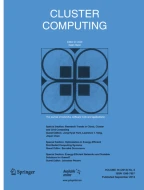Abstract
In order to recover and use the vehicle’s own braking energy as much as possible to improve fuel economy, reducing greenhouse gas emissions, this paper analyzes the braking characteristics of a certain type of heavy vehicle in the driving condition of the city, according to the structure characteristics of hydraulic hybrid system, the control strategies and processes of three working modes are proposed. By establishing the vehicle dynamic model, the simulation model was established on AMESim software, and the effect of control strategies on the performance of the whole machine were analyzed and optimized. The hardware and software system of the controller based on MATLAB/Simulink and dSPACE were developed, and the correctness of the control strategies and simulation analyses were verified by the road condition tests on the experimental prototype vehicle which was converted from a primitive heavy vehicle. Simulation and experimental results show that the proposed control policy parameters are reasonable. The hydraulic regenerative braking control strategies can reasonably distribute the ratio of hydraulic regenerative braking torque and the traditional friction torques, under the premise to ensure braking safety, the kinetic energy of the brake can be recovered and utilized efficiently, and it has good ride comfort.
Similar content being viewed by others
Explore related subjects
Discover the latest articles, news and stories from top researchers in related subjects.References
U.S. Energy Information Administration. International Energy Outlook 2016. U.S. Energy Information Administration, Washington, DC (2016)
Xin, W., Ji-hai, J.: Regenerative braking control strategy for wheel drive hydraulic hybrid vehicle. J. Jilin Univ. 9(6), 1544–1549 (2009)
Shen, W., Huang, H., Pang, Y., et al.: Review of the energy saving hydraulic system based on common pressure rail. IEEE Access 5, 655–669 (2017)
Simon, B., Christine. E., Edward, U., et al.: Hydraulic hybrid systems for commercial vehicles. SAF Paper, 2007-O1-X150. (2007)
Kim, Y.J., Filipi, Z.: Simulation study of a series hydraulic hybrid propulsion system for a light truck. SAE Paper, 2007-O1-X151. (2007)
Lynn, A., Smid, E., Eshraghi, M., et al.: Modeling hydraulic regenerative hybrid vehicles using AMESim and Matlab/Simulink. Proceedings of SPIE The International Society for Optical Engineering. Orlando, FL, United states: [s. n.] , pp. 24–40 (2005)
Matheson, P., Stecki, J.: Modeling and simulation of a fuzzy logic controller for a hydraulic-hybrid powertrain for use in heavy commercial vehicles. SAE Paper, No. 2003-O1-3275. (2003)
Hiroki, S., Shigeruh, I., Eitaro, K., et al.: Study on hybrid vehicle using constant pressure hydraulic; system with fly wheel for energy storage. SAE Paper, No. 2004-01-3064. (2004)
Boretti, A., Stecki, J.: Hydraulic hybrid heavy duty vehicles-challenges and opportunities. SAE Paper, No. 2012-01-2036. (2012)
Fussner, D., Wendel, G., Wray, C.: Analysis of a hybrid multi-mode hydromechanical transmission. SAE Technical Paper, 2007-01-1455. (2007)
Hui, S., Li-fu, Y., Jun-qing, J.: Hydraulic/electric synergy system(HESS) design for heavy hybrid vehicles. Energy 35(12), 5328–5335 (2010)
Peng, D., Yin, C.L., Zhang, J.W.: Advanced braking control system for hybrid electric; vehicle using fuzzy control logic. SAE paper, No. 2006-01-3583. (2006)
Lin, C.-C., Peng, H., et al.: Power management strategy for a parallel hybrid electric truck. IEEE Trans. Control Syst. Technol. 11(6), 839–850 (2003)
Xin-hui, L.: The hydraulic hybrid energy saving in construction machinery. Constr. Mach. Digest 6, 19–22 (2010)
Jun-cheng, L., Jing-ping, L., Zhi-yu, H.: Fuel economy of a hydraulic hybrid vehicle. J. Central South Univ. 1, 80–86 (2011)
Zhi-sheng, Y.: Automobile theory. Mechanical industry publishing house, Beijing (2009)
Yu-hui, L., Ji-hai, J.: Performance of static-hydraulic flow coupled system with secondary regulation. J. Jilin Univ. 38(5), 1095–1100 (2008)
Shen, W., Mai, Y.: A new electric hydraulic actuator adopted the variable displacement pump. Asian J. Control 18(1), 178–191 (2016)
Zuo-wo, D., Dong-biao, Z.: Calculation and selection of a cars hydraulic accumulator in its regenerative energy braking system. Mech. Sci. Technol. Aerosp. Eng. 26(7), 926–930 (2007)
Tao, L.I.U.: JIANG Ji-hai. Regenerative braking for parallel hydraulic hybrid vehicle. J. Harbin Inst. Technol. 42(9), 1449–1553 (2010)
Dirck, M.E.: The evaluation and analysis of a power split hydraulic hybrid drivetrain. University of Missouri-Columbia (2003)
Sun, H., Jiang, J.H., Wang, X.: Parameters matching and control method for hydraulic; hybrid vehicle with secondary regulation technology. Chin. J. Mech. Eng. 22(1), 57–63 (2009)
Shen, W., Jiang, J.: Control strategy analysis of the hydraulic hybrid excavator. J. Franklin Inst. 352(2), 541–561 (2015)
Shen, W., Su, X.: Controller design for network-based Markovian jump systems with unreliable communication links. Complexity 21(S2), 623–634 (2016)
Fu, Y.L., Qi, X.Y.: LMS Imagine. Lab AMESim system modeling and simulation reference manual. Press of Aeronautics and Astronautics University, Beijing (2011)
Lammert, M.P., Burton, J., et al.: Hydraulic hybrid and conventional parcel delivery vehicles’ measured laboratory fuel economy on targeted drive cycles. SAE Paper, No. 2014-01-2375. (2014)
Acknowledgements
This article is supported by “the Fundamental Research Funds for the Central Universities”; “National Natural Science Foundation of China (NSFC) (51405183)” and “Special research found of doctoral program of Ministry of Education (20130061120036)”, which I am here with acknowledge and sincere thanks.
Author information
Authors and Affiliations
Corresponding author
Rights and permissions
About this article
Cite this article
Chen, Y., Liu, X., Wang, X. et al. Control strategies and optimization analyses of front-mounted parallel system. Cluster Comput 22 (Suppl 3), 5151–5163 (2019). https://doi.org/10.1007/s10586-017-1116-9
Received:
Revised:
Accepted:
Published:
Issue Date:
DOI: https://doi.org/10.1007/s10586-017-1116-9
